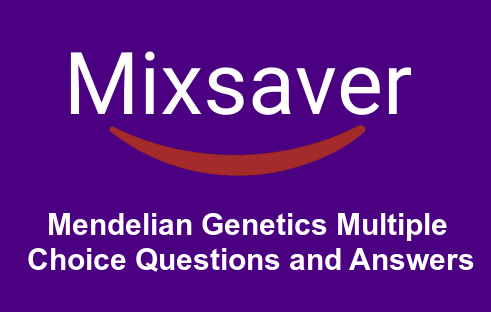Microbes in Human Welfare NCERT pdf | Human Health and Disease Important Questions
1. Sterilisation is an autoclaving that
(a) destroys the bacterial activity
(b) denatures the enzymes
(c) Both (a) and (b)
(d) None of the above
Ans. c
2. An antifungal drug is obtained from
(a) Penicilium griseofulvum
(b) P. camemberti
(c) P. roqueforti
(d) P. notatum
Ans. a
3. First hormone obtained from genetically engineered bacteria is
(a) adrenaline
(b) thyroxine
(c) insulin
(d) testosterone
Ans. c
4. Saccharomyces cerevisiae is used in
(a) tanning
(b) brewing
(c) baking
(d) Both (b) and (c)
Ans. d
5. Father of fermentation is
(a) Louis Pasteur
(b) Nageli
(c) Porterq
(d) None of these
Ans. a
6. Curd, cheese and butter are produced by
(a) Yeast
(b) Penicillium
(c) Streptococcus
(d) None of these
Ans. c
7. Distribution of clean and quality milk throughout the world has been made possible through the work of
(a) Leeuwenhoek
(b) Koch
(c) Pasteur
(d) Blackman
Ans. c
8. During alcoholic fermentation, conversion of sugar into alcohol is due to direct action of
(a) temperature
(b) microorganisms
(c) concentration of sugar solution
(d) zymase enzyme
Ans. d
Microbes in Human Welfare pdf | Microorganisms Questions and Answers class 8
9. Vitamin-B, is produced by
(a) Propionibacterium
(b) Ashbya gossypii
(c) Saccharomyces
(d) Rhizopus
Ans. b
10. Vinegar is produced by
(a) two step processes, i.e. first fermentation of sugar by yeast and second fermentation of ethyl alcohol by acetic acid bacteria
(b) fermentation of sugar by Lactobacillus
(c) fermentation of sugar by Aspergillus
(d) fermentation of sugar by Saccharomyces
Ans. a
11. Father of microbiology is
(a) Robert Koch
(b) Lister
(c) Pasteur
(d) Robert Brown
Ans. c
12. Distillation of wine is necessary as it
(a) increases quality
(b) prevents further fermentation and spoilage
(c) decreases toxicity
(d) None of the above
Ans. a
13. Tetracycline is extracted from
(a) Streptomyces ramosus
(b) Streptomyces aurofaciens
(c) Streptomyces scolens
(d) Bacilus lichenformis
Ans. b
14. Cyclosporin is obtained from
(a) Bacillus subtilis
(b) Trichoderma polysporum
(c) Tolypociadium inflatum
(d) Both (b) and (c)
Ans. d
15. An amylase enzyme is produced by fungus
(a) Aspergillus oryzae
(b) Aspergillus flavus
(c) Aspergillus niger
(d) Trichoderma polysporum
Ans. a
16. Which vitamin is synthesised by bacteria in human gut?
(a) Vitamin-A
(b) Vitamin-C
(c) Vitamin-D
(d) Vitamin-K
Ans. d
Microbes in Human Welfare class 12 ncert pdf | Living World and Classification of Microbes Questions and Answers
17. A broad spectrum antibiotic is
(a) penicillin
(b) streptomycin
(c) erythromycin
(d) All of these
Ans. d
18. A bioreactor is
(a) a fermentation tank
(b) culture containing radioactive isotopes
(c) culture for synthesis of new chemicals
(d) hybridoma
Ans. a
19. Streptomycin is used for the treatment of
(a) Gram + ve
(b) Gram – ve
(c) Both (a) and (b)
(d) Any type of bacterial infection
Ans. c
20. Penicillin was discovered by Alexander Fleming in the year yeast
(a) 1901-02
(b) 1919-20
(c) 1928-29
(d) 1899-1900
Ans. c
21. Fermentation to produce alcohol by yeast (Saccharomyces) is due to
(a) amylase
(b) invertase
(c) zymase
(d) All of these
Ans. c
22. Streptococcus is employed in the manufacture of
(a) wine
(b) bread
(c) cheese
(d) All of these
Ans. c
23. Which is not correct about antibiotics?
(a) Fleming discovered the first commercial antbictic
(b) Waksman coined the term antibictic in 1942
(c) Allergy may develop against an antibiotic
(d) An antibiotic is effective against one specific pathogen
Ans. d
24. Clostridium butyricum has been used in the synthesis of
(a) vitamin-B
(b) vitamin-A
(c) vitamin-C
(d) vitamin-D
Ans. a
25. Mucor javonicus synthesises
(a) lipase
(b) amylase
(c) protease
(d) streptokinase
Ans. a
Living world and classification of microbes class 8 questions and answers | Microbes in human welfare neet notes pdf
26. Dosa and idli are prepared by the action of
(a) Lacto bacilus
(b) Saccharomyces cenvisae
(c) Bacilus subells
(d) Rhizopus oryzae
Ans. c
27. The microorganisms grown on molasses and sold as a food flavouring substance is
(a) Saccharomyces
(b) Rhizopus
(c) Acetobacter
(d) Lactobacillus
Ans. a
28. Tetracycline is extracted from
(a) Streptomyces ramosus
(b) S aurofaciens
(c) S. scolens
(d) Bacillus lichenformis
Ans. b
29. Anaerobic respiration of yeast produces
(a) alcohol
(b) carbon dioxide
(c) alcohol, carbon dicxide and other beverages
(d) None of the above
Ans. c
30. Antibiotics are mostly obtained from
(a) fungi
(b) Actinomycetes bacteria
(c) Both (a) and (b)
(d) cyanobacteria
Ans. b
31. An important drug is obtained from the bark of
(a) Withania
(b) Cinchona
(c) Papaver
(d) Momordica
Ans. b
32. Morphine, which is used as an analgesic is obtained from
(a) Taxus brevifolia
(b) Papaver somniferum
(c) Cinchona officinalis
(d) Berberis nilghiriensis
Ans. b
33. The term antibiotic was coined by
(a) Howard Florey
(b) John Tyndall
(c) Selman Waksman
(d) Gerhard Domagk
Ans. c
Microbes in Human Welfare class 12 pdf | Microbes in human welfare notes pdf
34. The yeast that is used in alcohol production and bread making is
(a) Escherichia coli
(b) Saccharomyces cerevisiae
(c) Bacillus subtilis
(d) Pseudomonas putida
Ans. b
35. Which of the following bacterium produces butyric acid?
(a) Acetobacter aceti
(b) Clostridium butylicum
(c) Lactobacillus
(d) None of the above
Ans. b
36. Which one of the following is a wrong matching of a microbe and its industrial product, while the remaining three are correct?
(a) Clostridium butylicum – Lactic acid
(b) Aspergillus niger – Citric acid
(c) Yeast – Statins
(d) Acetobacter aceti – Acetic acid
Ans. a
Mock Test for Microbes in Human Welfare
37. Ethanol is commercially produced through a particular species of
(a) Aspergillus
(b) Saccharomyces
(c) Clostridium
(d) Trichoderma
Ans. b
38. Bread becomes porous due to release of CO, by the action of
(a) yeast
(b) bacteria
(c) virus
(d) protozoans
Ans. a
39. Yeast cannot ferment starch and complex carbohydrates because they
(a) lack diastase
(b) lack lipase
(c) lack zymase
(d) lack invertase
Ans. a
40. Yeast grows abundantly on
(a) cowdung and cow urine
(b) organic matter rich in sugar
(c) organic matter rich in fats
(d) nectar
Ans. b





